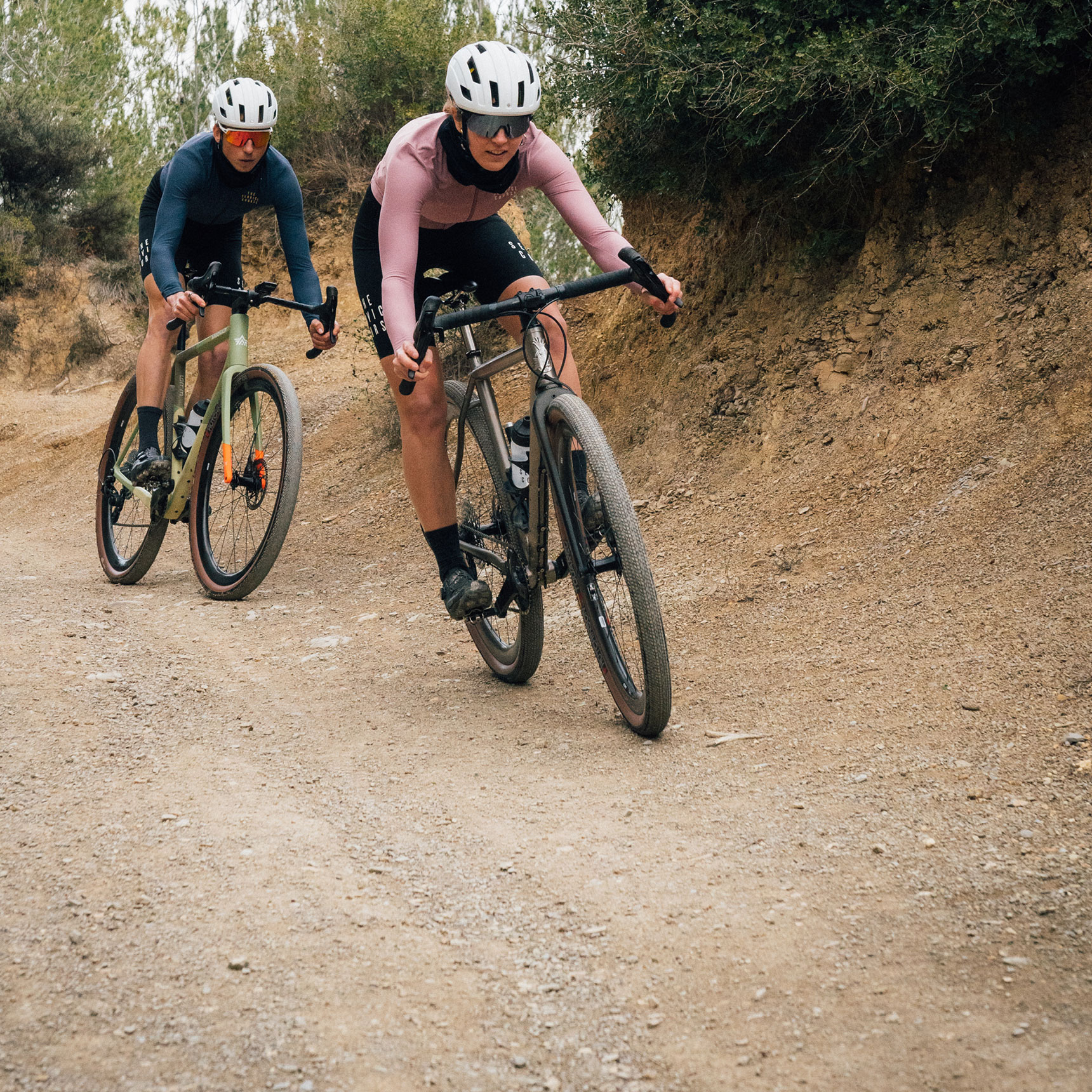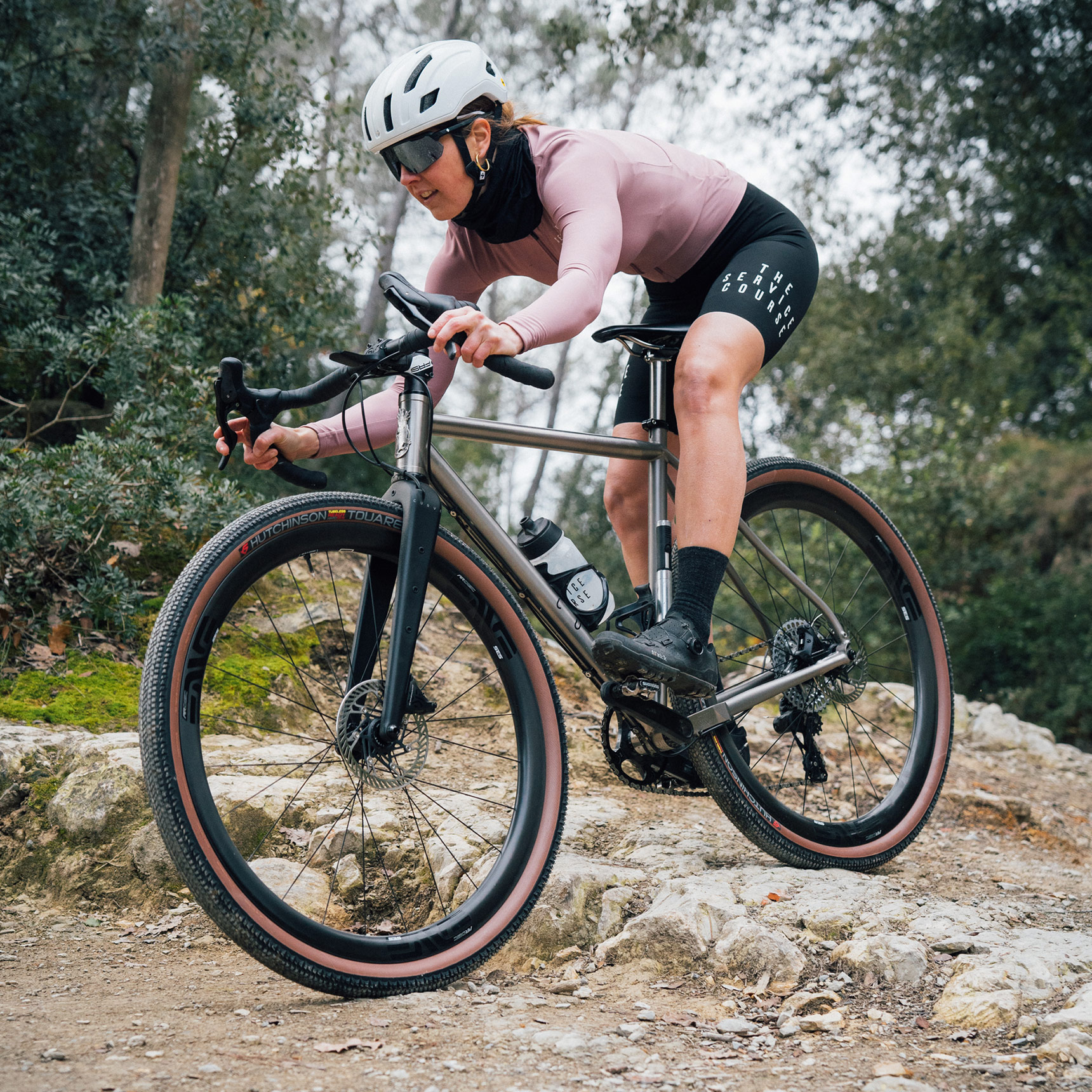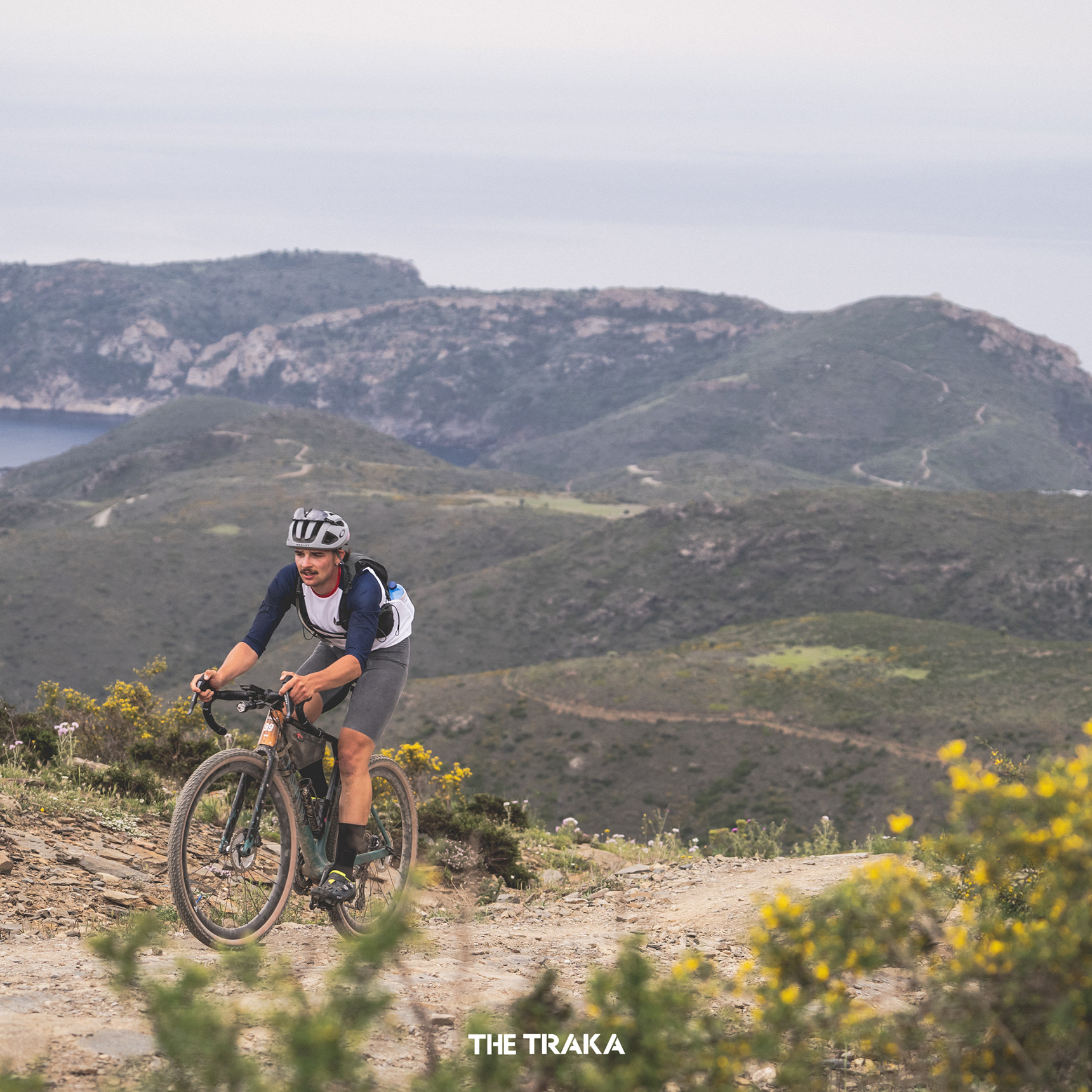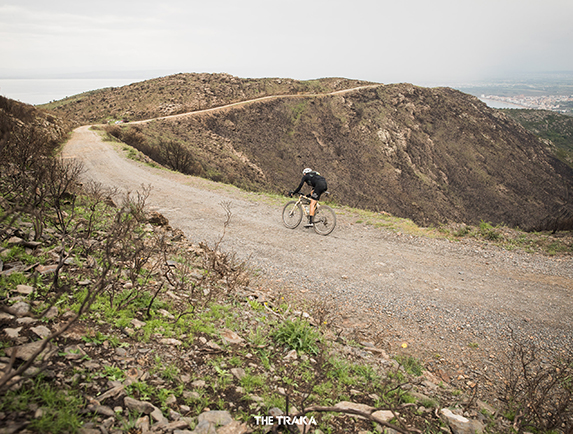

20 April 2025
GRAVEL EVENT PREP: TYRES & TIPS


How to prepare for your first gravel event and pick the best gravel tyre?
The past few years have seen gravel firmly become the fastest growing cycling discipline. A fun combination of riding that takes the technicality and skill of mountain biking and matches it with the speed and long distances of road cycling.
With a lot of events sitting outside of the confines of the traditional cycling associations there’s a more relaxed, friendly atmosphere and an informal, collective approach to the rules known in the scene as the ‘spirit of gravel’.
Because of this, the gravel world is seen by many people as a great way to dip your toe into the world of cycling racing. Due to its increased popularity there’s been a huge proliferation in the number of events around the world to choose from. Races like The Traka that offer routes ranging from 100km all the way up to a leg sapping 560km mean there really is something for everyone.
The Spirit of Gravel: An Inclusive Cycling Community
In this blog we aim to help you prepare for your first gravel event. We’re assuming you’ve put the training hours in preparation so instead we’ll focus on our top equipment, nutrition and mental preparation tips and tricks we’ve picked up from years of tackling gravel events around the world.


Choosing the Best Gravel Tyres
When it comes to preparing for your event, choosing the right tyres is one of the most important things to get right. Choosing the best tyre can mean you’re faster, more comfortable, have greater traction and control and are less likely to puncture, all things that could not only be the difference between winning and losing but more importantly between having a fun day on your bike or a complete nightmare.
How to Choose the Right Tread and Size
There are two main things to consider when selecting your tyres, the tread type and the size. Different models have different characteristics that are suited to different terrains, so which you pick will depend on the type of surfaces you’ll be riding during your event. Likewise, when it comes to choosing the size, it’s a tradeoff between speed and comfort. Bigger tyres are more comfortable but at the expense of weight and speed. For a complete guide to choosing the best gravel tyres, including tread patterns, sizes, and more, check out our comprehensive tyre guide.

Best Gravel Tyres for Different Terrain Types
CARACAL RACE
The fastest gravel tyre on the market (proven in independent tests). For racers & speed demons: Ultra-low rolling resistance with a tread pattern optimized for hardpack and mixed terrain.
✔ SwiftEasy casing – Pro-level suppleness for vibration damping
✔ Mach Tread 3.0 compound – Hutchinson’s fastest compound
✔ 700x40mm – The gravel sweet spot
✔ Tubeless-ready – Lighter, safer, and more efficient
CARACAL
One tyre that masters most of gravel conditions – From hardpack to moderate singletrack. Balanced tread pattern: Micro-chevrons provide traction in loose corners while maintaining road-like roll.
✔ Hardskin bead-to-bead protection
✔ Now available in 700x45mm – More volume for rougher courses
✔ Mach Tread 3.0 compound – road race speed
TOUAREG
The all-rounder for rougher terrain. When the course gets chunky: More aggressive than the Caracal but still efficient.
✔ Bead-to-bead Hardskin – Maximum puncture protection
✔ 40 to 50 mm options
TUNDRA
Mud, rocks, and technical chaos. For extreme conditions: Deep tread clears mud and grips loose descents.
✔ Interrupted center tread – Retains speed on hardpack
✔ 40 to 50mm options – Float over the gnarliest sections


Mix & Matching for Dialled Performance
In addition to the individual benefits of the Caracal Race, Caracal, Tundra and Touareg tyres, Hutchinson also recommends mix and matching the tyres for optimal performance in different terrain types. By choosing different tire combinations, riders can achieve a more dialed-in performance that is tailored to their specific needs.
One popular mix and match combination is the Tundra on the front wheel and the Touareg on the rear wheel. This combination provides excellent grip and control on technical and rocky trails, while also offering good traction on mixed surfaces. For riders who demand both speed and adaptability, try the Caracal 45mm up front for confident grip on loose terrain, paired with a Caracal Race 40mm at the rear—delivering race-proven efficiency where it matters most.
By mix and matching different tire combinations, riders can achieve a more customized and dialed-in performance that is tailored to their specific riding needs and terrain types. Hutchinson’s MTB-inspired mix and matching is an excellent way to get the most out of your gravel bike and enjoy a more versatile and reliable ride.


Gearing Up for Your Gravel Event
It’s clear that bike setup and gearing is a personal choice that won’t be the same for everyone, but getting it right is essential. A lot of gravel events consist of long days in the saddle with some steep climbs so choosing a compact crankset and wide range cassette is an easy way to save your legs.
Why Choosing the Right Gears is Crucial
Sketchy off-road descents and chunky tyres mean it’s pretty unlikely you’ll need to worry about running out of gears when going downhill or on the flats so you’re not losing out by choosing an easier setup. Also when climbing off-road you have reduced traction so will often have to stay seated to avoid losing grip, having an easier gear can make this much easier and save your legs for that all important sprint to the finish!
Hutchinson’s Recommendations for Bike Setup
Make sure your bike fits well and you have some gloves, shoes and clothing that is comfortable and suited to your conditions. Any long bike ride is hard on the body but throw in tough off-road sections and any niggles or pains will be amplified over the course of the day. Comfort is key to unlocking a good performance!


Emergency Repair Kit: Essentials for Your Ride
Unless you’re a professional you’re going to need to take care of yourself if you suffer any mechanical mishaps. Luckily Hutchinson’s gravel tyres feature bead to bead Hardskin technology that helps to avoid punctures, but gravel riding puts tyres under a lot of stress and sometimes punctures are inevitable. You might also experience other mechanical issues so it’s always good to be prepared. If the worst happens make sure you’re prepared with some a simple emergency repair kit consisting of at least:
2 Inner tubes
Tubeless Plugs (if you ride tubeless!)
CO₂ Canisters or a pump
Tyre levers
Multi-tool
Spare chain links

Fueling Your Ride: Hydration and Nutrition
How to Fuel Your Body for a Long Gravel Ride
When it comes to hydration and nutrition, theoretically there isn’t anything special about gravel riding that is any different to road or mountain biking, the amount of calories you need to take in won’t be any different to any other type of intense ride. What is different is that gravel races can be very long, upwards of seven hours or more so you might need to take a slightly different approach to your usual rides.
The common tactic of relying on sugar heavy energy bars, gels and drinks can come back to bite you, even if your stomach is trained to handle a high carbohydrate intake. Over really long races if you rely entirely on sugar for fueling eventually your stomach can decide it’s had enough and refuse to take on any more calories, which ultimately could result in you not finishing your event.
Real Food vs. Energy Bars and Gels
If your event is a long one we recommend packing some ‘real food’ for the first half of your ride, try a toasted bagel with peanut butter, hunt down a recipe for a savoury flapjack or wrap up some tortillas with a filling of your choice. This should leave you in a good position going into the second half of your event where you can switch back to a more carbohydrate heavy nutrition. Remember to keep gels and caffeine for the tail end of the race when you really need a boost.
Hutchinson’s Nutrition Tips for Gravel Events
The most important thing when it comes to nutrition is to experiment before your event. A common mistake is to test a new product on the day of the race, or pick out something new at a food stop only to find it doesn’t agree with you and derails your whole event. Make sure you’re familiar with everything you’re consuming, eat and drink little and often and you’ll greatly reduce your chances of a nutrition disaster.

Mental Preparation: Overcoming the Challenges
The Mental Side of Gravel Riding: Preparing for the Unknown
This is an often overlooked part of tackling a big race but can be just as important as your physical training. Gravel races by their nature are long, hard events and you never know what might happen… mechanicals, crashes and bad conditions are all part and parcel of the gravel experience and you need to be mentally prepared for what’s to come.
Tips for Overcoming Negative Thoughts and Staying Focused
If you go into your event understanding it’s going to be hard then you’re on the right track. Accept that there will be times where you feel awful (and times that you feel great!), negative thoughts are natural and that these will pass if you just keep pedalling. Remember that it’s unlikely everything will go to plan, so make sure you’re ready to be flexible. There’s no point in sticking to the plan if it’s not working, take time to stop, think about what’s happening and adapt.
Hutchinson’s Mental Toughness Tips for Gravel Racing
Make sure you train for the worst conditions, riding in bad weather for example is not only draining physically but mentally too so a bit of practice can make all the difference come raceday.
It’s easy to get caught up in the excitement of a race, the mass start of gravel events mean you might be around hundreds of other riders of varying skill and fitness levels. This is where your discipline needs to come into play. Be realistic about your goal for the event and your fitness going into it, don’t get caught out trying to ride at a pace you can’t sustain for the whole event. It might be tough not to chase people down but it will pay off when you catch them up later in the race.







